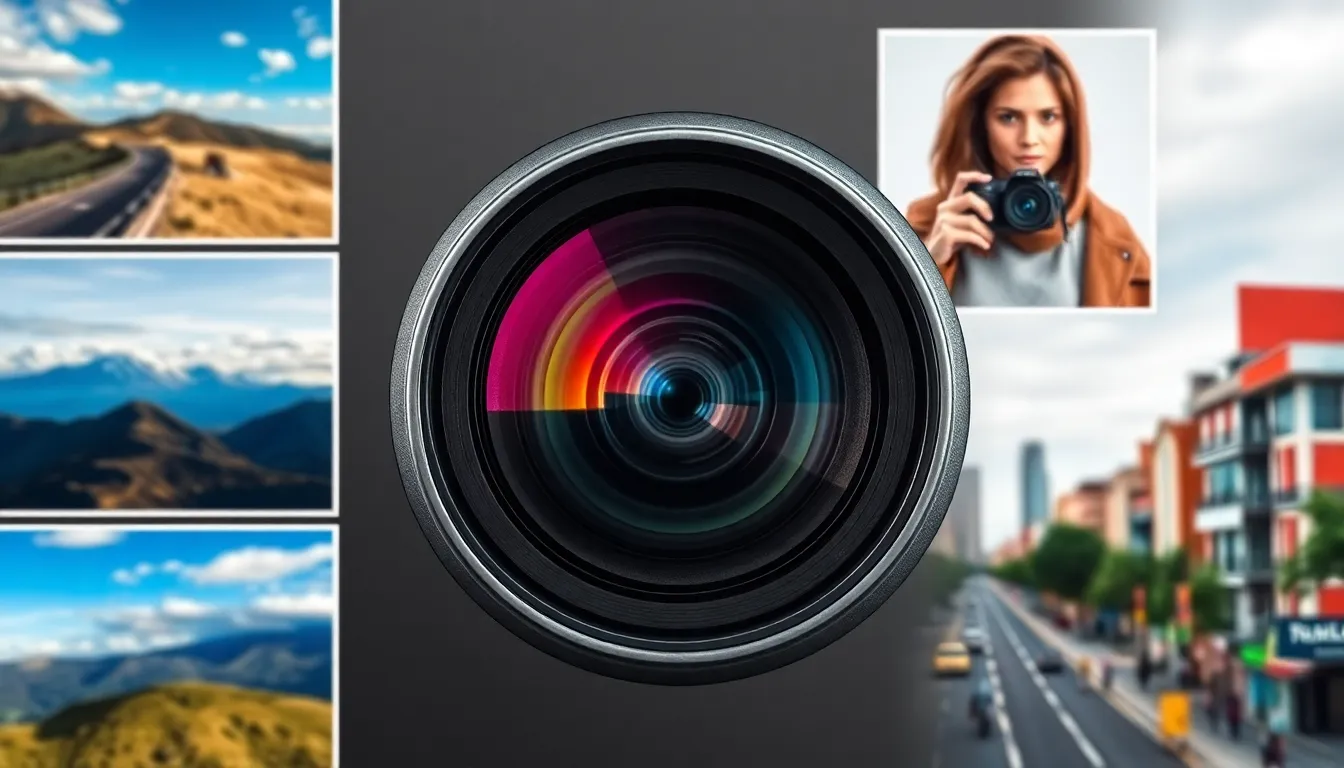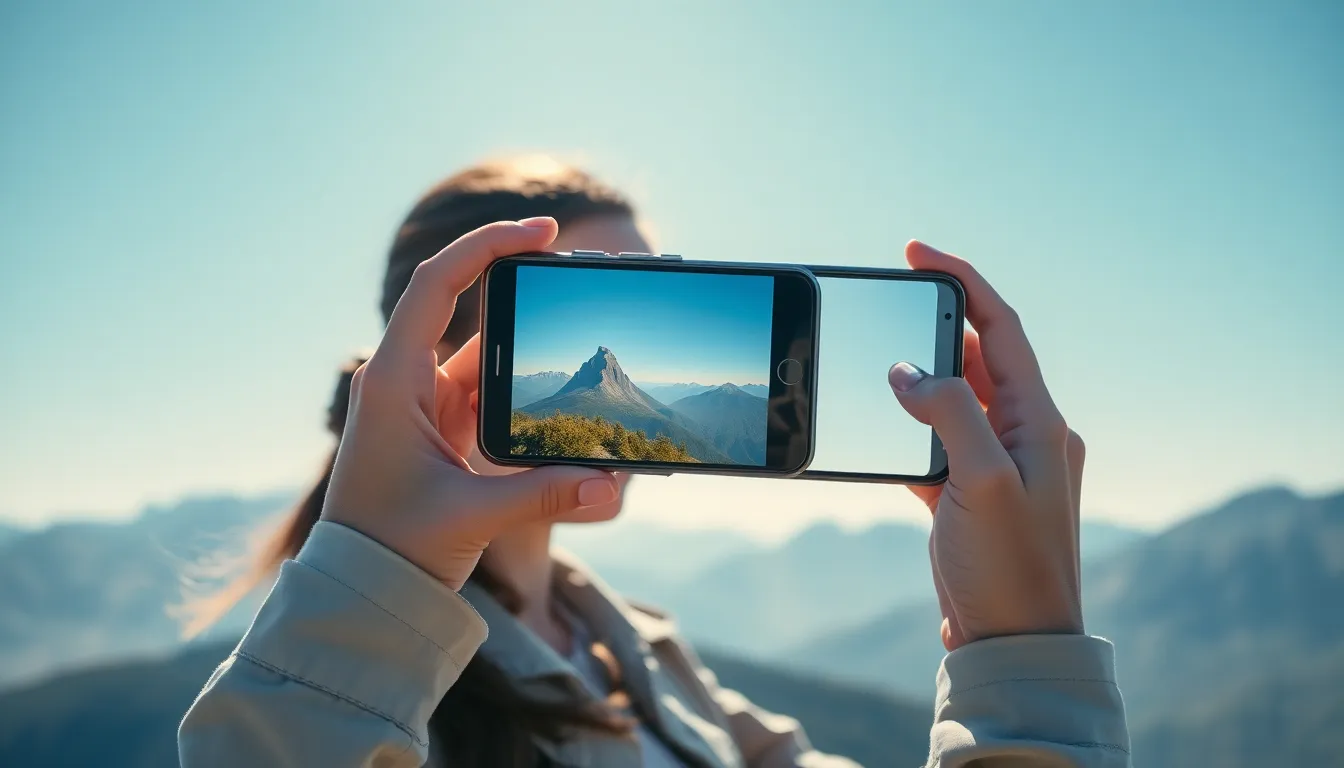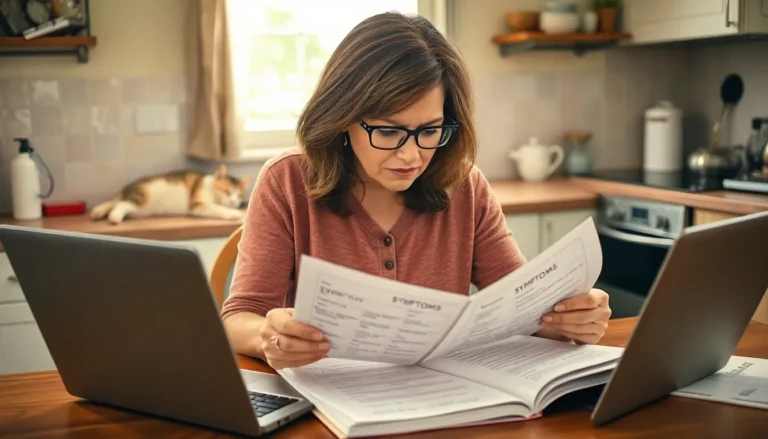Ever wondered why your iPhone photos look so good? It’s not just the lighting or your impeccable selfie skills. The secret sauce lies in the focal length of its camera. Understanding focal length can turn anyone into a photography whiz, making those vacation snapshots pop like a fresh bag of popcorn.
Table of Contents
ToggleUnderstanding Focal Length
Focal length significantly impacts photography. Comprehending this concept allows photographers to maximize their potential with an iPhone camera.
Definition of Focal Length
Focal length refers to the distance from the lens to the image sensor. It’s measured in millimeters. A shorter focal length results in a wider field of view, capturing more of the scene. In contrast, a longer focal length offers a narrower view, ideal for distant subjects. For instance, the iPhone’s primary camera typically has a focal length of around 26mm, while the telephoto lens may reach lengths of 52mm or more. These variations affect how images appear, influencing perspective and scale.
Importance in Photography
Understanding focal length enhances composition skills. It allows photographers to determine how much of a scene appears in the frame. A wide-angle lens captures landscapes, fitting expansive scenery into a single shot. Conversely, a telephoto lens isolates subjects, providing important details and clarity in portraits or wildlife photos. Photographers harness these focal lengths to create different emotions and narratives within their images. Ultimately, knowing how focal lengths function boosts creativity and improves photo quality.
Focal Length of iPhone Cameras

Focal length plays a vital role in the performance of iPhone cameras. Understanding specific focal lengths helps photographers make better choices in composition.
Standard Focal Lengths in Different Models
Standard focal lengths vary across different iPhone models. The iPhone’s main wide-angle camera has an approximate focal length of 26mm, making it suitable for general photography. The iPhone Pro models feature an ultra-wide camera with a focal length around 13mm, allowing for expansive landscape shots. Telephoto lenses on the iPhone can reach focal lengths of 52mm or more, perfect for capturing details from a distance. Variations in lens design enable users to select the ideal focal length for various shooting scenarios, enhancing their overall photography experience.
Comparison with Traditional Cameras
Comparison with traditional cameras highlights the flexibility of iPhone focal lengths. Camera systems with interchangeable lenses offer a wider range of focal lengths but require changing lenses for different shooting styles. In contrast, iPhones combine multiple focal lengths in a single device, providing convenience without sacrificing quality. Traditional cameras may capture images on larger sensors, but iPhones utilize advanced software to enhance digital images. Additionally, the compact nature of iPhones increases portability, making photography accessible anywhere. The integration of multiple lenses within iPhones enables versatility that meets a variety of photographic needs.
Effects of Focal Length on Photography
Focal length plays a key role in photography, influencing how images appear. Understanding these effects helps photographers choose the best settings for their shots.
Wide-Angle vs. Telephoto
Wide-angle lenses encompass a broader perspective, perfect for expansive landscapes or tight indoor spaces. For instance, an ultra-wide lens at approximately 13mm captures greater detail in cramped areas. Telephoto lenses, with focal lengths around 52mm or more, excel at isolating subjects from their background, making them suitable for portraiture or wildlife shots. Each option serves distinct photography purposes. Wide-angle lenses enhance the sense of space, while telephoto lenses bring distant subjects closer, emphasizing detail. By mastering both types, photographers can enhance their composition and storytelling through images.
Impact on Depth of Field
Focal length directly affects depth of field, which refers to the area in focus within an image. Shorter focal lengths provide a broader depth of field, keeping more elements sharp in the frame. This attribute works well for landscapes or group shots, where clarity across the entire scene is essential. In contrast, longer focal lengths narrow the depth of field, allowing for more pronounced background blur. This characteristic helps to isolate subjects, focusing attention and creating a sense of intimacy. By recognizing these effects, photographers can manipulate depth of field to elevate their visual narratives.
Choosing the Right Focal Length for Your Needs
Selecting the appropriate focal length significantly enhances photographic outcomes. It’s crucial to consider shooting scenarios and subjects when determining focal length.
Situational Photography Tips
For landscape photography, opt for the ultra-wide camera with a focal length around 13mm. This lens captures expansive scenes, making it perfect for sweeping vistas. When the goal is portrait photography, use the telephoto lens, which typically has a focal length of 52mm or more. This setup isolates subjects effectively, creating beautiful background blur that highlights them. Additionally, consider using the standard 26mm wide-angle camera when shooting urban scenes. This focal length balances detail and environment, offering impactful compositions. Transitioning between these lenses based on your photographic needs can drastically improve image quality.
Accessories to Enhance Focal Length
Photographers can enhance focal length options with various accessories. Clip-on lenses provide additional focal length options, offering versatility for creative shots. They facilitate the transition between different styles without a need for multiple devices. In addition to clip-on lenses, stabilizers improve the clarity and stability of images, especially in low-light situations. Accessories such as tripods further enhance stability, allowing for sharp long-exposure shots. Using these tools maximizes the potential of iPhone cameras, leading to better and more diverse photography experiences.
Understanding focal length is key to unlocking the full potential of iPhone photography. With various focal lengths available across different models, users can easily adapt to any shooting scenario. Whether capturing sweeping landscapes or intimate portraits, the right lens choice can significantly enhance image quality.
iPhones offer a unique blend of convenience and versatility, allowing photographers to explore their creativity without the hassle of changing lenses. By mastering focal length and its effects on composition and depth of field, anyone can elevate their photography skills. The tools and techniques discussed empower users to capture stunning images that tell compelling stories.



